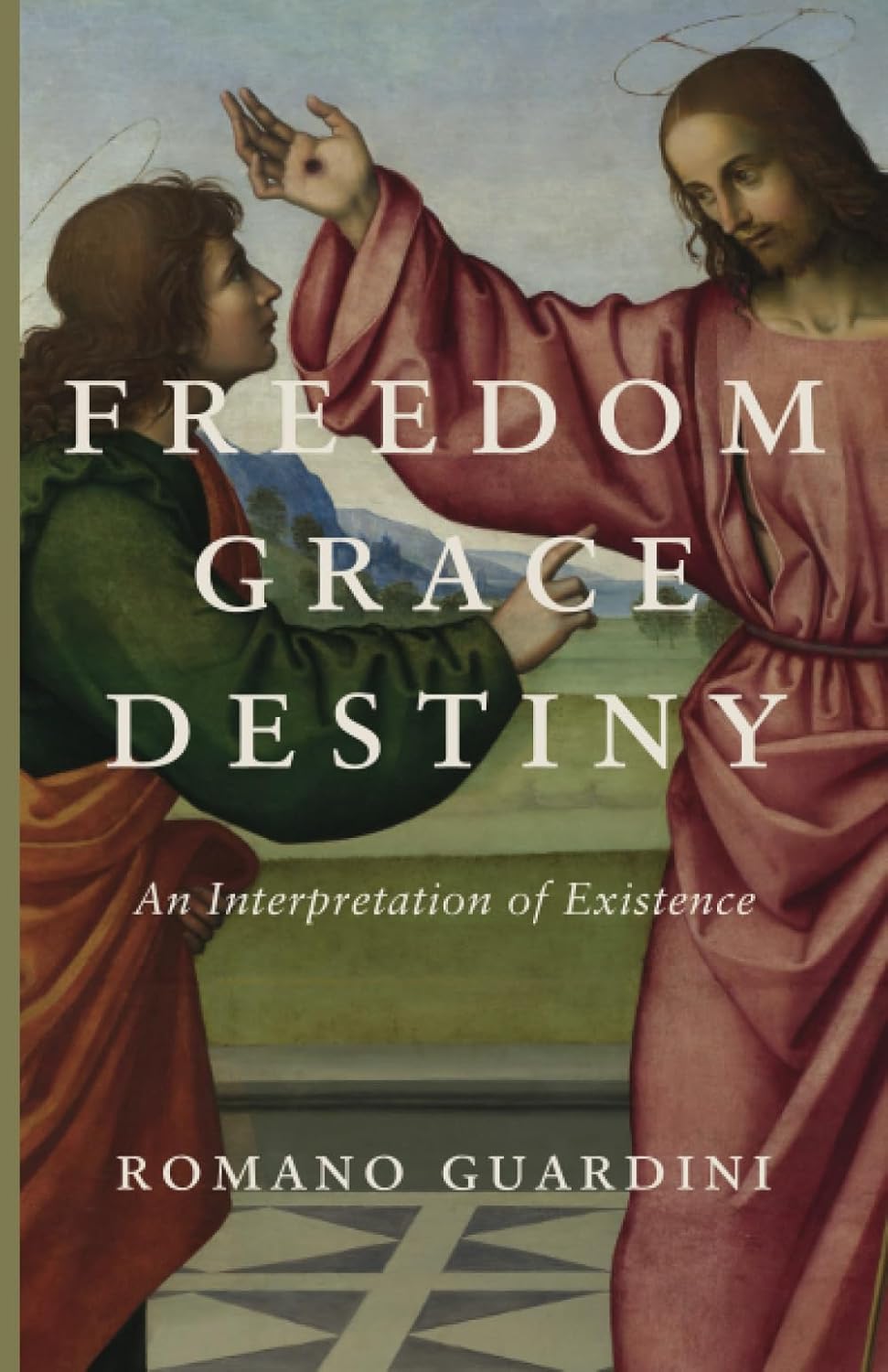
In 1960, one of theologian Romano Guardini’s last books was published: Freiheit, Gnade Schicksal. The English translation, published in 1961, bore an expanded title: Freedom, Grace, and Destiny: Three Chapters in the Interpretation of Existence. In 2023, the book was reissued by Cluny Media.
In the book’s Foreword, Guardini wrote that his book followed a principle that inspired earlier works, including The World and the Person (1940), recently republished by Regnery Gateway. That principle was an attempt “to view the pattern of Christian existence as a whole.”
“Early Christian thought had this universal view. Augustine draws no methodological division between philosophy and theology or, in philosophy, between metaphysics and psychology, within theology, between theoretical dogma and practical application to life but his mind proceeds from the whole of Christian existence to consider the total pattern and its different parts. The position remained fundamentally the same till the peak point of the Middle Ages had been passed. Thomas Aquinas took considerable trouble to draw critical distinctions as well as to give a comprehensive synthesis. But the basis of his thinking was, none the less, the living consciousness of the unity of Christian existence, as world and grace.
“Then the division sets in. Philosophy is separated from theology, empirical science from philosophy, practical instruction from knowledge of reality. The effort was not unjustified and has resulted in numerous valuable consequences, but it has its perilous side because it deepens and solidifies the disintegration of modern man.
“I shall not pursue this topic further; it would demand an analysis of the whole cultural situation in which we are placed. I am concerned with the fact that the conscious unity of existence has been to a large extent lost even by believing Christians. The believer no longer stands with his faith amid the concrete, actual world, and he no longer rediscovers that world in his faith. He has made a grim necessity of this dismemberment by constructing, if we may employ the term, a chemically pure faith in which he insists upon seeing the true form of orthodoxy. This orthodoxy has a somewhat austere and very courageous quality, but we must not forget that it is an emergency position. To save redemption by the Son it has been forced to abandon creation by the Father. Yet the sentence ‘He who sees Me, sees the Father’ (John xix. 9) has logically as its reverse the further sentence, ‘Who will not see the Father, does not see Me any more.’ This basic situation has given rise to different kinds of Christian existence. Faith has perhaps taken refuge in inwardness and left the world to its own devices; or all that we understand by grace receives a purely negative relation to the world and the result is a paradox — something that cannot possibly exist and yet has to be postulated; or it may attempt to justify a worldly, scientific outlook through a new apologetic that seeks to build its bridges — a true work of Sisyphus — without asking whether the chasms exist that they are meant to cross. Or, finally, if it has not already succumbed to these difficulties, it makes its peace with the new secularism and becomes a mere religious philosophy and ethic.
“I am not implying that faith in itself has grown more feeble. This has been frequently suggested but, in my opinion, quite unjustly. The man of our age who does believe has often a more conscious and courageous and — it might be added — a more heroic faith than was so in earlier periods. The final judgment will one day reveal how frequently and how completely the New Testament description of faith as the ‘victory that overcometh the world’ (I John v. 4) will have been realized in these our times. Yet this faith has increasingly lost contact with the world and grown increasingly incapable of grasping and fashioning it: in theory, as a complete Weltanschauung or world outlook, a vision and understanding of the world from the standpoint of faith; in the practical sphere, as a true method, based upon reality and truth, of saving the objects and values of our human life that are threatened with continual perils. From this same source derive in large measure the triviality and emptiness which affect religious thought and activity at many a point. The riches of revelation are inexhaustible, but we have to put our questions to them, and these questions come from the reality of the world. Equally unbounded are the possibilities for action which lie in the figure and power of Christ, but they have to be discovered, and we discover them in the measure in which real life approaches Christ.
“The time has come for us to take our stand again, to think and live, in Christian existence as a whole, in the sense of the Pauline words: ‘All is yours but you are Christ’s’ (I Cor. iii. 23). It is time to realize that all divisions have only a methodological value and that what really exists is the world and man in the world, as called by God and judged and redeemed. It is time for us to consider the whole as a whole. In the process we shall preserve all that has been won in the long, sustained efforts of previous centuries: a critical conscience, careful differentiation, and the serious discussion of scientific questions. Our formula is in no sense one of ‘Back to the past,’ whether to the Middle Ages or the early Christian period. It can only be a forward movement, transcending divisions to attain to the whole, with the approach which once was that of Western man but which now, after an interval of five hundred years, has become more critical, more earnest, and more detached.”
— from Romano Guardini, Freedom, Grace, and Destiny: Three Chapters in the Interpretation of Existence (Pantheon, 1961)